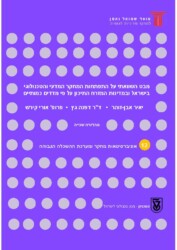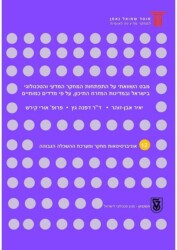חברת Thomson Reuters פרסמה בשנת 2011 דו”ח העוסק בניתוח השינויים הרבים שחלו בעשור האחרון בפעילויות המחקר במדינות המוסלמיות במזרח התיכון, כפי שהם משתקפים במאגר המידע שלה, ה-ISI. הדו”ח מצביע על התפתחויות מרשימות בהיבטים של מדיניות מחקר, השקעות במחקר ותפוקות מחקר. התהליך מתרחש בעיקר בחמש מדינות: טורקיה, איראן, מצרים, ערב הסעודית וירדן.
בעקבות פרסום דו”ח זה, ביצענו במוסד נאמן בחינה השוואתית של תהליכי התפתחות המחקר המדעי והטכנולוגי שחלו בישראל ובמדינות המזרח התיכון. הנתונים המוצגים במסגרת עבודה זו מבוססים על שני המדדים העיקריים בהם נהוג להשתמש (מדד מספר הפרסומים המספק אומדן של הפוריות המחקרית ומדד ממוצע הציטוטים לפרסום המספק אומדן של השפעת הפרסומים, המשקפת את איכות המחקר(. כמו כן, מוצגים נתונים המתייחסים למדדים של הפרסומים והחוקרים המצוטטים ביותר, המהווים אינדיקאטור לאיכותם ולחשיבותם של הפרסומים. נבחנו גם מספר הפטנטים שנרשמו בארה”ב.
הנתונים המוצגים מצביעים על התהליכים הבאים שהתרחשו במהלך השנים האחרונות:
- התקדמות משמעותית ומהירה של איראן וטורקיה בתחומים רבים, יחסית להתקדמות מתונה (ולעיתים, נסיגה) של ישראל בתחומים אלה.
- הפערים הקטנים בהדרגה בין ישראל לבין איראן וטורקיה, באים לביטוי בתחילה במדד מספר הפרסומים, ובהמשך גם במדד ממוצע הציטוטים למאמר.
- ישראל מובילה במרבית התחומים שנבחנו, אולם איראן וטורקיה נמצאות כבר מעל ישראל בכמה תחומים במספר הפרסומים, ובתחומים מועטים אף בממוצע הציטוטים לפרסום.
- ישראל מובילה במספר הפטנטים שנרשמו בארה”ב, ביחס ליתר מדינות המזרח התיכון שנבדקו.
ההתקדמות המהירה במדינות המזרח התיכון הינה תוצאה של כמה סיבות הכוללות השקעות גבוהות, יוזמות חדשות להקמת מרכזי מחקר, שיתופי פעולה עם אוניברסיטאות איכותיות במדינות המפותחות ועוד. אלה הביאו להקטנת הפער בין ישראל לבין חלק ממדינות המזרח התיכון בתחומים המדעים.
הקפאון, ובשטחי מחקר מסוימים גם הנסיגה, שחלו בתפוקות המחקר המדעי בישראלי ובאיכותו הם תוצאה של קיצוצים מתמשכים בתקציבי הממשלה המופנים לאוניברסיטאות המחקר בעשור הראשון של המאה ה-21. קיצוצים אלה הובילו להקטנת מספר חברי הסגל האקדמי, לעליה בגיל הממוצע שלהם, להגירה לחו”ל של מדענים צעירים ומדענים בעלי שם ועוד. מאחר שקבוע הזמן בהשגת מצוינות מחקרית הוא ארוך, התהליכים שהתרחשו לאחרונה יורגשו במלוא חריפותם רק בעתיד.



